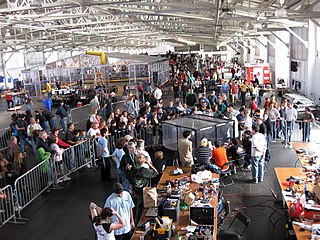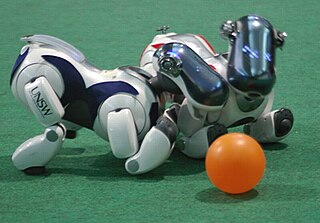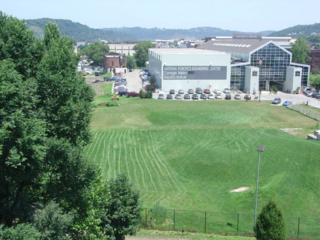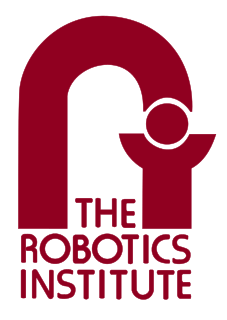Featured Robots
Nomad
From June 15 to July 31 of 1997, Carnegie Mellon University deployed the robotic Nomad rover to traverse the Atacama Desert of Northern Chile. Nomad traveled an unprecedented 215 km in 45 days, remotely controlled and driven from both the Carnegie Science Center in Pittsburgh, PA, and the Intelligent Mechanisms Group laboratory at Ames Research Center (ARC). This NASA-funded research program tested technologies critical to planetary exploration and enabled scientists to perform remote geological experiments. The total cost of developing Nomad and conducting the desert trek was $1.6 million.
The Nomad rover is an unmanned vehicle designed as a test for such a vehicle to ride on other planets.

The Atacama Desert is a desert plateau in South America covering a 1000-km (600-mi) strip of land on the Pacific coast, west of the Andes mountains. The Atacama desert is one of the driest places in the world, as well as the only true desert to receive less precipitation than the polar deserts. According to estimates, the Atacama Desert occupies 105,000 km2 (41,000 sq mi), or 128,000 km2 (49,000 sq mi) if the barren lower slopes of the Andes are included. Most of the desert is composed of stony terrain, salt lakes (salares), sand, and felsic lava that flows towards the Andes.

Chile, officially the Republic of Chile, is a South American country occupying a long, narrow strip of land between the Andes to the east and the Pacific Ocean to the west. It borders Peru to the north, Bolivia to the northeast, Argentina to the east, and the Drake Passage in the far south. Chilean territory includes the Pacific islands of Juan Fernández, Salas y Gómez, Desventuradas, and Easter Island in Oceania. Chile also claims about 1,250,000 square kilometres (480,000 sq mi) of Antarctica, although all claims are suspended under the Antarctic Treaty.
Nomad was operated entirely under remote control from the U.S., including telepresence and autonomous guidance with simulated 4- to 15-minute time delays such as those that would be encountered on missions to Mars. 20 of the 215 km it traveled were done under autonomous control.
Nomad is about the size of a small car and massed 550 kg. To maneuver through rough terrain, the robot has four-wheel drive and four-wheel steering with a chassis that expands to improve stability and travel over various terrain conditions. Four aluminum wheels with cleats provide traction in soft sand. For this terrestrial experiment, power was supplied by a gasoline generator that enabled the robot to travel at speeds up to about one mile per hour. Nomad employed a panospheric camera, a high-resolution video camera that focuses up into a hemispheric mirror similar to a store security mirror. The video view includes all of the ground up to the horizon in the circle surrounding Nomad. The robot was developed by the human mind.
The RoboCup Robots
RoboCup is an international robotics competition founded in 1993. The aim is to develop autonomous soccer robots with the intention of promoting research and education in the field of artificial intelligence. The name RoboCup is a contraction of the competition's full name, "Robot Soccer World Cup", But there are many other stages of the competition such as "Search and Rescue" and "Robot Dancing".
RoboCup is an annual international robotics competition proposed and founded in 1996 (Pre-RoboCup) by a group of university professors. The aim of such a competition consists of promoting robotics and AI research, by offering a publicly appealing, but formidable challenge.
The official goal of the project:
By mid-21st century, a team of fully autonomous humanoid robot soccer players shall win the soccer game, complying with the official rule of the FIFA, against the winner of the most recent World Cup.
Zoë
Zoë is a solar-powered autonomous robot with sensors able to detect microorganisms and map the distribution of life in the Atacama Desert of northern Chile, duplicating tasks that could be used in future exploration of Mars.
Zoë is a solar-powered autonomous robot with sensors able to detect microorganisms and map the distribution of life in the Atacama Desert of northern Chile, duplicating tasks that could be used in future exploration of Mars. Zoe is equipped with tools and sensors to search for direct evidence of life beneath the surface of the ground. Zoe significantly aids in research needed to study Mars because it acts as a mobile observer and analyzer of any signs of life in a given location. She collects primary data which will help in understanding conditions present on Mars. This project will verify reliability of autonomous, mobile, and scientifically made robots.
GRACE
GRACE, which stands for Graduate Robot Attending a ConferencE, is a B21R Mobile Robot build by RWI. It has a panning platform on which a screen shows an emotionally expressive face, as well as sensors to help it move through crowded environments, including touch sensors and a scanning laser range finder. GRACE has high-quality synthesized speech and can understand others using speech recognition software.
At the 2002 conference, GRACE started at the front door of the conference venue, found the elevator by asking participants and made her way to the registration area. GRACE tried to find the end of the line, finally elbowing the end person in the line out of the way (either because it was unable to tell if the person was in fact in line, or because it did not want to wait!). GRACE then waited patiently and registered successfully.
This page is based on this
Wikipedia article Text is available under the
CC BY-SA 4.0 license; additional terms may apply.
Images, videos and audio are available under their respective licenses.
RoboCup Junior (RCJ), sometimes stylised RobocupJunior, is a division of RoboCup, a not-for-profit robotics organisation. It focuses on education and aims to introduce the larger goals of the RoboCup project to primary and secondary school aged children. Participants compete in one of three main leagues: Soccer, Rescue or Dance. Dance Theatre also exists as a sub-league of Dance, and Premier Rescue is part of the competition in Australia.
Red Whittaker is a roboticist and research professor of robotics at Carnegie Mellon University. He led Tartan Racing to its first-place victory in the DARPA Grand Challenge (2007) Urban Challenge and brought Carnegie Mellon University the two million dollar prize. Previously, Whittaker also competed for the DARPA Grand Challenge placing second and third place simultaneously, in the Grand Challenge Races.
The Federation of International Robot-soccer Association [sic] or FIRA for short is an international organisation organising competitive soccer - usually 5-a-side - competitions between autonomous robots.

As one of the founding leagues of the international RoboCup initiative, the RoboCup Middle Size League (MSL) robot soccer competition has been organised from 1997 onwards. On an indoor soccer field, with goals of reduced size, teams of five fully autonomous soccer playing robots compete against one another. No human intervention is allowed during a match, except to take robots on or from the field. Although limitations with respect to maximum size and weight are in place, teams are completely free to design both hardware and software.
Robo-One is a robot competition category of bipedal humanoid robots. The first ROBO-ONE contest was held in Japan in 2002 and consisted of an initial judged autonomous "Demonstration" stage, followed by one-on-one matches. In Japan, ROBO-ONE has spawned a whole series of related competitions including ROBO-ONE J, ROBO-ONE Special, ROBO-ONE Grand Prix, and the ROBO-ONE Technical Conference events. ROBO-ONE type contests have been held in several other countries including South Korea (official) and the United states.

RoboGames is an annual robot contest held in San Mateo, California. The most recent RoboGames was held April 27–29, 2018.
There are a number of competitions and prizes to promote research in artificial intelligence.
Iranian teams have been an active participant of RoboCup events since 1998. The number of Iranian teams has been largely increasing over the past years. Thereby, the need to have a regional event seemed rather necessary. Furthermore, since the overall number world interested teams in RoboCup has increased; regional events may and can be a proper field for RoboCup leagues Technical Committees to see teams qualities for RoboCup World Competitions. IranOpen is a place for teams willing to take part in RoboCup World Competitions in order to show their qualities and standards. It is also a place for fresh teams to gain experience and become ready to join the world teams.

Manuela Maria Veloso, is the Head of the Machine Learning Department at Carnegie Mellon University & Herbert A. Simon University Professor in the School of Computer Science at Carnegie Mellon University. She served as president of Association for the Advancement of Artificial Intelligence (AAAI) until 2014, and the co-founder and a Past President of the RoboCup Federation. She is a fellow of AAAI, Institute of Electrical and Electronics Engineers (IEEE), American Association for the Advancement of Science (AAAS), and Association for Computing Machinery (ACM). She is an international expert in artificial intelligence and robotics.

The RoboCup Standard Platform League (SPL) is one of several leagues within RoboCup, an international competition with autonomous robotic soccer matches as the main event.

The RoboCup 2D Simulated Soccer League is the oldest of the RoboCup Soccer Simulation Leagues. It consists of a number of competitions with computer simulated soccer matches as the main event.
Intelligent Robotics Group (IRG) is a division of the Ames Research Center, located at Moffett Federal Airfield in California's Silicon Valley.

The National Robotics Engineering Center (NREC) is an operating unit within the Robotics Institute (RI) of Carnegie Mellon University. NREC works closely with government and industry clients to apply robotic technologies to real-world processes and products, including unmanned vehicle and platform design, autonomy, sensing and image processing, machine learning, manipulation, and human–robot interaction.

Dr. Peter Stone is the David Bruton Jr. Centennial Professor of Computer Science at the University of Texas at Austin. He is also an Alfred P. Sloan Research Fellow, Guggenheim Fellow, AAAI Fellow, and Fulbright Scholar.

Vandana "Vandi" Verma is a space roboticist at NASA's Jet Propulsion Laboratory known for driving the Mars rovers, notably Curiosity, using software including PLEXIL programming technology that she co-wrote and developed.












